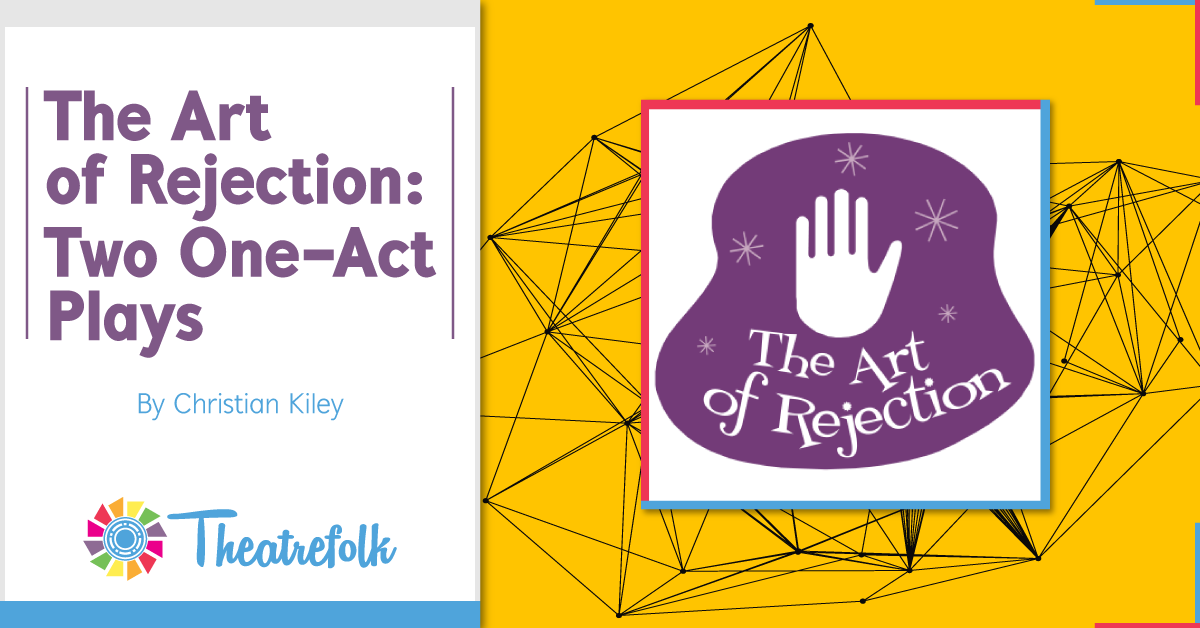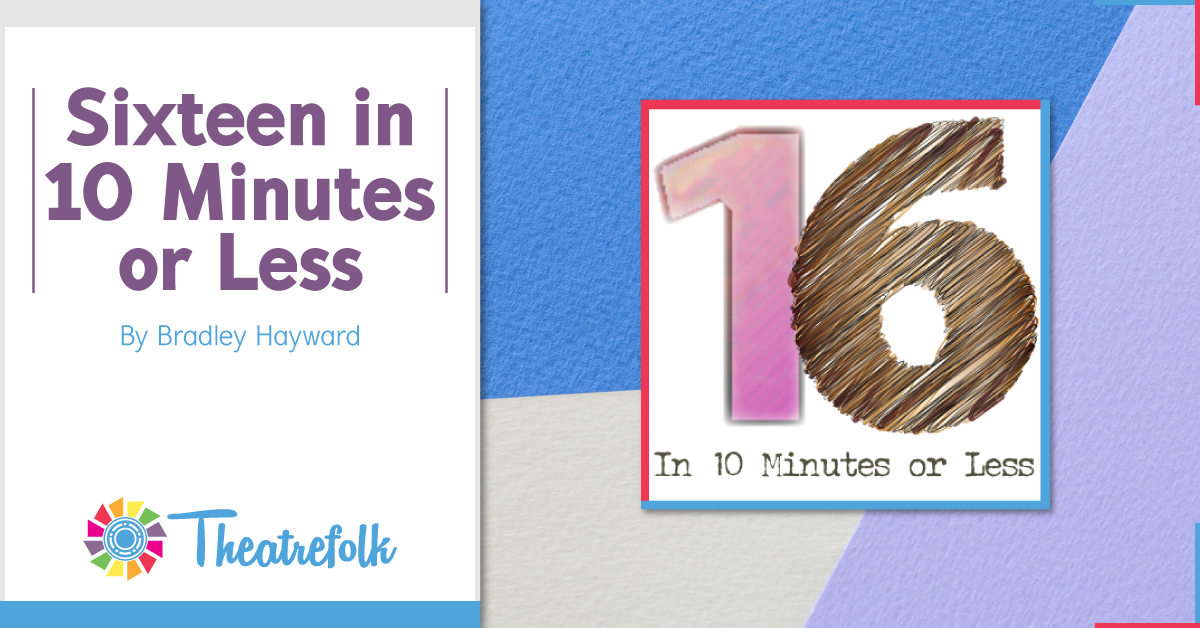
Theatrefolk Featured Play – The Art of Rejection: Two One-Act Plays by Christian Kiley
Welcome to our Featured Play Spotlight. The Art of Rejection: Two One-Act Plays by Christian Kiley consists of two one-act plays that expertly combine realism with the abstract, and include characters that high school students can really relate to.
R is the only letter in a sea of numbers. Potential sits in a chair. These two one acts – Art of Rejection and Chaired can be performed separately or together.
The Art of Rejection: R is the only letter in a sea of numbers. Always picked last for kickball, never part of the ‘in’ crowd, never gets the girl. What is a letter to do to get through life? An avant-garde look at the price of popularity.
Chaired: Potential sits centre stage in a chair. At times Potential is forced to remain seated by family, teachers and friends. At other times Potential will do anything not to stand. It’s better to stay in place, not move, not reach out. Sometimes the hardest thing to do is just stand up…
Why did we publish this play?
There are two one acts in this fabulous collection. It could be something that you easily divide up in a large class. What I like about the plays is their tone – the dialogue is definitely realistic but the situations sway to absurd. If you’re looking for a transition piece for your students before they do something outside the realism box, pick up The Art of Rejection. Easy to stage, costume and both have little to no set! Who doesn’t love that?
Let’s hear from the author!
1. Why did you write this play?
This goes back to my junior high days when the school yard was the primary location for bullying. I wanted to capture the feeling of being bullied and rejected for the audience and then give the protagonist the opportunity to get a unique kind of revenge or have an epiphany (which I think R and Potential both experience in different ways). This is truly how I felt in junior high and parts of high school. It is an exaggerated version of it. But the plays grew from seeds of truth.
2. Describe the theme in one or two sentences.
Is popularity worth it or is it just conformity with a prettier paint job? When you dig deeper, there is a special kind of courage it takes to be yourself, to discover your full potential and grow into it.
3. What’s the most important visual for you in this play?
Definitely when R turns into a tree. It is so unexpected and outside the realm of anything I would have thought of normally. That physical transformation at the end of “The Art of Rejection” is shocking and stunning.
4. If you could give one piece of advice for those producing the play, what would it be?
Let the entire production spring forth from the actors. Let the actors represent as much of the world as you think they can. Turn it over to them. The piece is a celebration of minimalism in that way.
5. Why is this play great for student performers?
It taps into an energy that I still feel today and I see and feel with the students I teach. Most Theatre students have been R or Potential for at least parts of their lives. And they have been around people like the other characters for so long that they have already engaged in the character study (everyday). I asked one of the actors who played a bully in both plays how he was able to do it (he is such a nice person) and he said, “there are people like this everywhere, you don’t even have to look for them, they are part of your daily life.”


